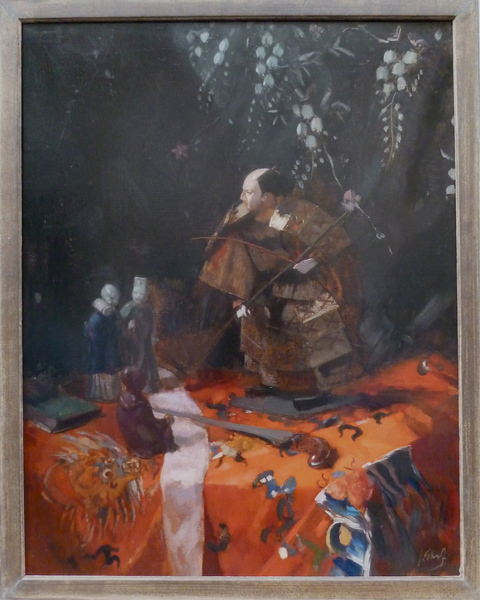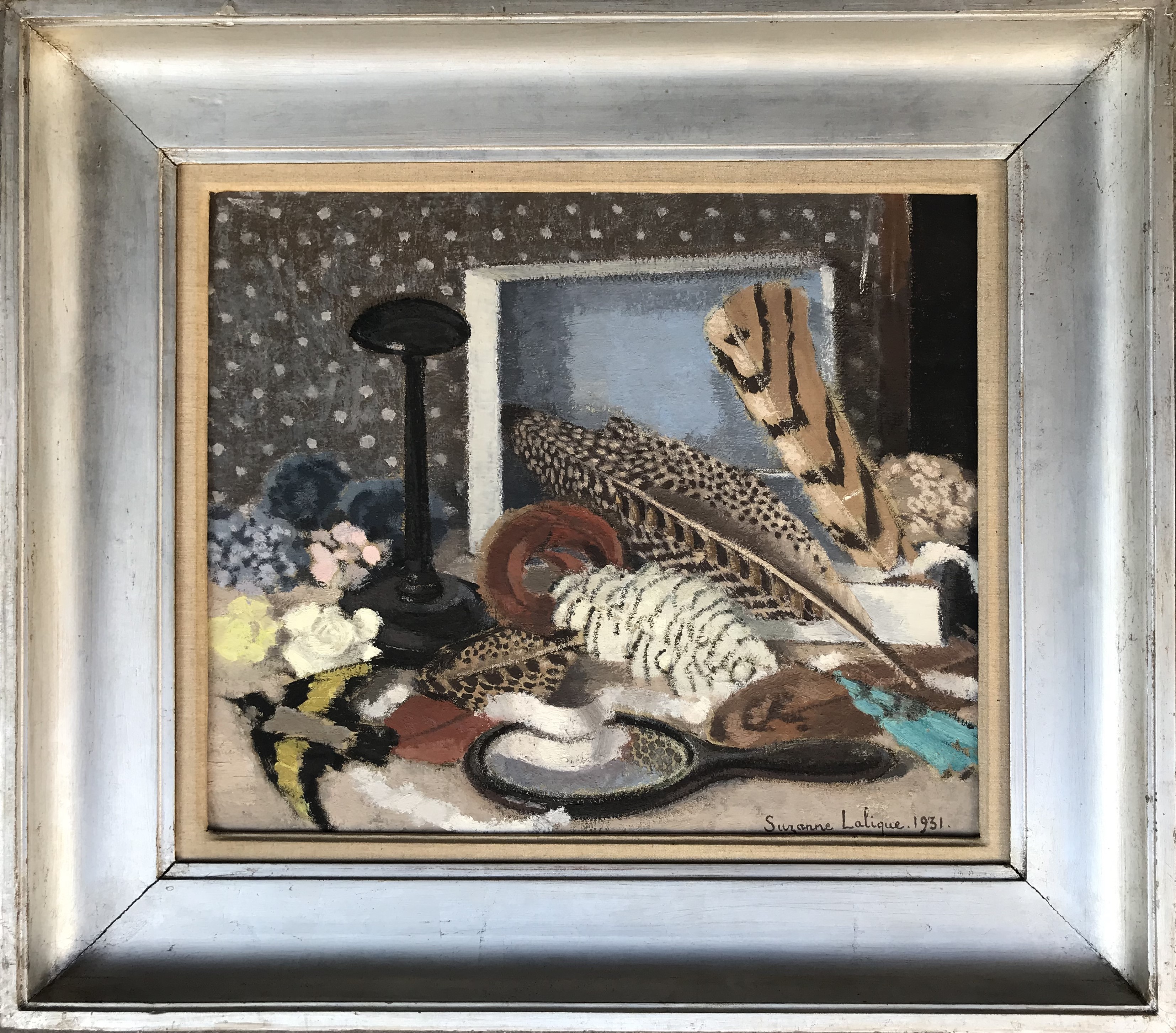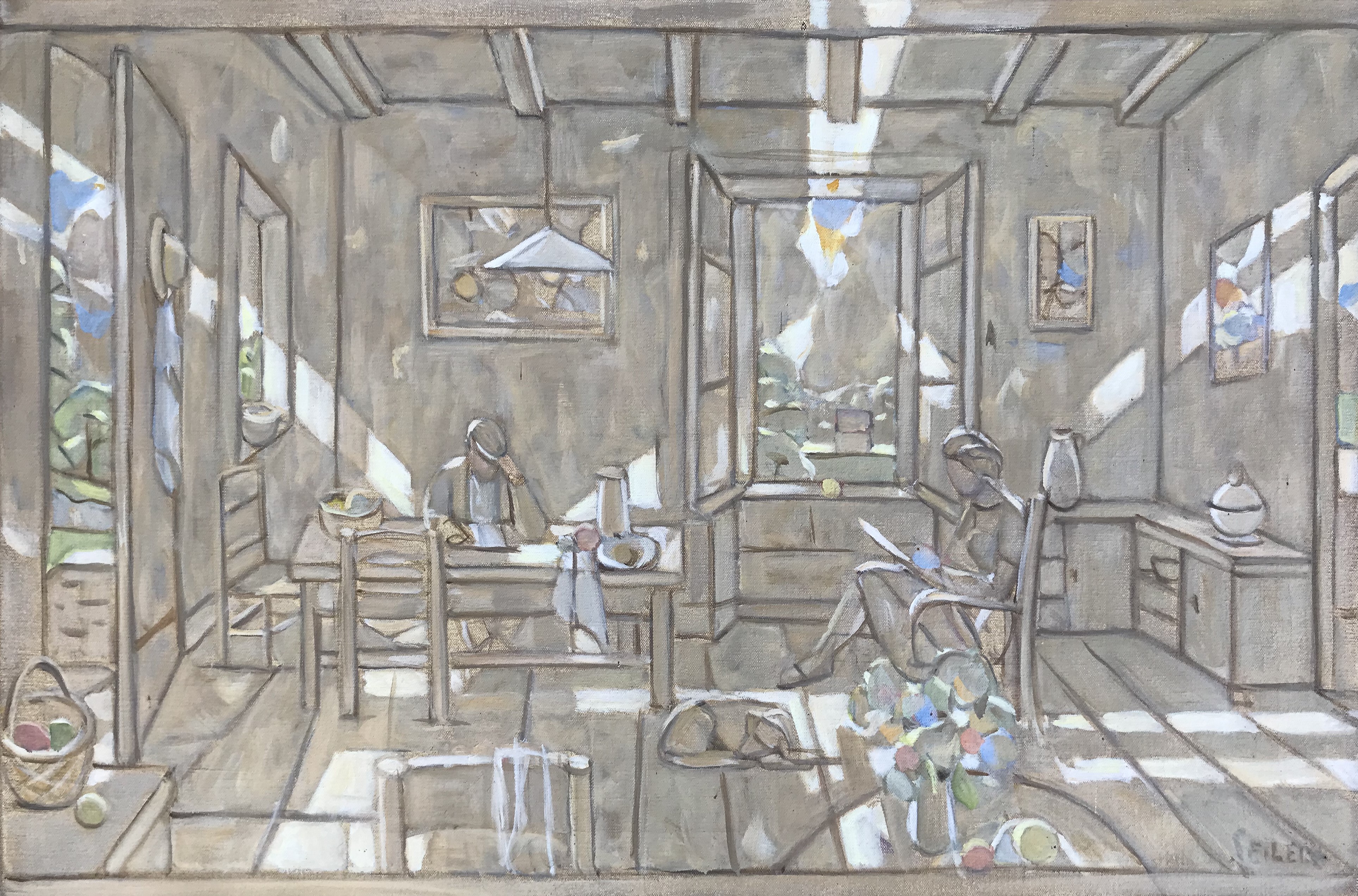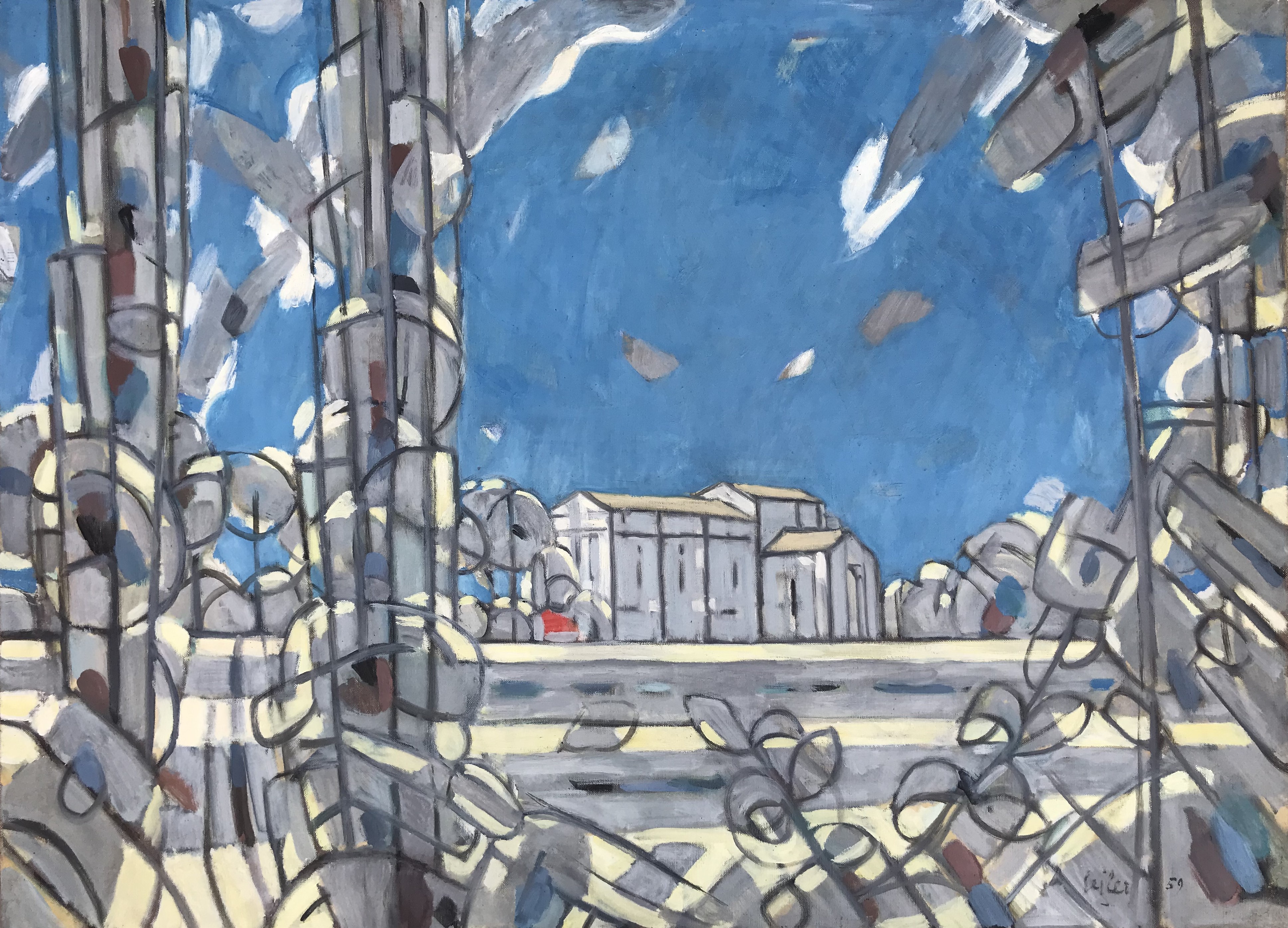« LE SAMOURAÏ »
Artiste
Signé en bas à droite
"s.Garf"
Dimensions
76 x 60 cm
Vendu
Salomon Garf (1879-1943) est un peintre, graveur, dessinateur et lithographe néerlandais connu pour ses portraits, ses scènes d’intérieur et ses natures mortes. Il étudie notamment à l’Institut des Arts appliqués d’Amsterdam et à l’Académie royale des Beaux-arts d’Amsterdam, où il suit les enseignements d’August Allebé et Nicolaas van der Waay. En 1905 il travaille à Anvers puis s’installe jusqu’en 1914 à Laren où une communauté d’artiste est établie. Il peint alors essentiellement des compositions classiques (intérieurs ruraux, natures mortes). Il retourne ensuite à Amsterdam où il se fait un nom en peignant des élégantes dans des intérieurs et des portraits Ses natures mortes sont souvent réalisées pour son propre plaisir, genre où l’artiste s’illustre particulièrement.
Il est membre de l’Arti’s Board of Directors entre 1938 et 1941 avant d’en être expulsé par les nazis. Il rejoint alors la Résistance et aide à la confection de fausses cartes d’identités. Le 6 aout 1943 il est arrêté et déporté à Auschwitz où il est assassiné le 27 août.
Le contenu de son atelier a pu être enlevé par ses élèves avant d’être confisqué. Son travail est aujourd’hui exposé au Singer Museum de Laren et au Jewish Historical Museum d’Amsterdam.
Simon Garf propose ici une nature morte d’inspiration orientale. Le centre de la composition est occupé par une grande figurine de samouraï japonais placée sur une table recouverte d’un tissu orangé à motifs orientaux comme un tête de dragon. Le samouraï est entouré de trois figurines anthropomorphes en jade et en ambre. Une épée, un éventail et un livre complète la composition. L’arrière-plan est constitué de branches fleuries qui s’échappent de l’obscurité. Elles participent à l’iconographie d’Extrême-Orient. On distingue par exemple les fleurs roses du prunus, motif couramment utilisé en Chine.
Garf joue avec le cadrage en coupant certains éléments comme le livre sur la gauche ou le ruban au premier plan pour dynamiser sa composition. La lumière plonge une partie de la scène de l’obscurité et créer un constate avec la peau blanche du samouraï, le mettant en valeur.
Chaque élément de la composition est détaillé avec précision. Le rendu des textures comme la brillance et la lisseur des jades sont rendus avec minutie et montrent le talent du peintre pour les natures mortes.
L’exactitude des éléments constituant le kimono témoigne des recherches entreprises par l’artiste.
Garf a notamment été inspiré par les objets qu’il trouvait sur le port d’Anvers, en provenance des comptoirs occidentaux des Indes et du Japon. Ces diverses influences se ressentent et mélangent dans cette toile. Ainsi si le samouraï est une caractéristique de la culture japonaise, les figurines en jade et le tissu orangé rappellent plutôt des objets en provenance de Chine. Le sujet passionne Gard qui peint plusieurs variations de ce thème à partir des mêmes figurines placés selon une autre composition.
Garf s’inscrit dans la lignée du japonisme et du goût pour l’exotisme partagé par les peintres dès la fin du XIXe siècle en traitant cette fois-ci son sujet d’une manière plus classique, très figurative. En cela, il rompt avec l’effervescence artistique des avant-gardes du début du XXe siècle et offre un aperçu d’une autre forme de peinture, souvent à tort oubliée.
Salomon Garf (1879-1943) was a Dutch painter, printmaker, draftsman and lithographer known for his portraits, interior scenes and still lifes. He studied in Amsterdam at the Institute of Applied Arts and at the Royal Academy of Fine Arts, where he followed August Allebé and Nicolaas van der Waay’s teachings. In 1905 he worked in Antwerp and then settled until 1914 in Laren where an artist community was established. There, he painted mainly classical compositions (rural interiors, still lifes). Finally, he returned to Amsterdam and became known for his elegant women in interiors scenes and portraits. His still lifes were often made for his own pleasure, a genre in which he particularly succeeded.
He was a member of the Arti’s Board of Directors between 1938 and 1941 before being expelled by the Nazis. He joined the Resistance and helped to make fake ID cards. On August 6, 1943, he was arrested and deported to Auschwitz where he was assassinated on August 27.
His students were able to remove the contents of his workshop before the Nazis confiscated it. His work is now exhibited at the Singer Museum in Laren and the Jewish Historical Museum in Amsterdam.
Simon Garf offers here a still life inspired by Far East. At the center of the composition is placed a large Japanese samurai figurine laid on a table covered with orange fabric with oriental patterns like a dragon’s head. Three anthropomorphic jade and amber figurines surround the samurai. A sword, a fan and a book complete the composition. The background is made up of flowering branches rising out of the darkness. They participate in oriental iconography, the pink flowers could be prunus, a motif commonly used in China.
Garf plays with the framing by cutting out elements – the book on the left or the ribbon in the foreground for example – to energize the composition. Half of it is in the dark while the light plunges on the samurai figure, creating a strong contrast between its white skin and the foreground obscurity.
Each element of the composition is painted with precision. The textures, in particular the shine and smoothness of the jades, are meticulously treated and show Garf’s talent for still lifes.
The accuracy of his painting like the kimono’s details testifies his research on the subject.
Garf was notably inspired by objects he found in the port of Antwerp, coming from the western counters of India and Japan. These various influences are mixed in this work. Therefore, if the samurai is characteristic of Japanese culture, jade figurines and the orange fabric remind more China’s influence.
The subject interested him so much that he painted several variations of this theme with the same figurines, including the samurai.
Garf follows the tradition of Japonism and taste for exoticism shared by painters at the end of the 19th century, but treats his subject in a more classical manner, very figuratively. Hence, he breaks with the artistic effervescence of the avant-gardes of the early twentieth century and shows another form of painting, often forgotten.







